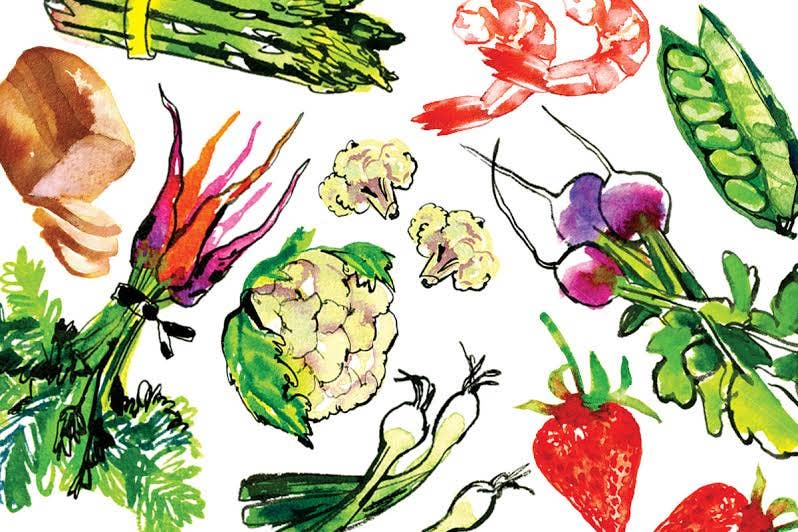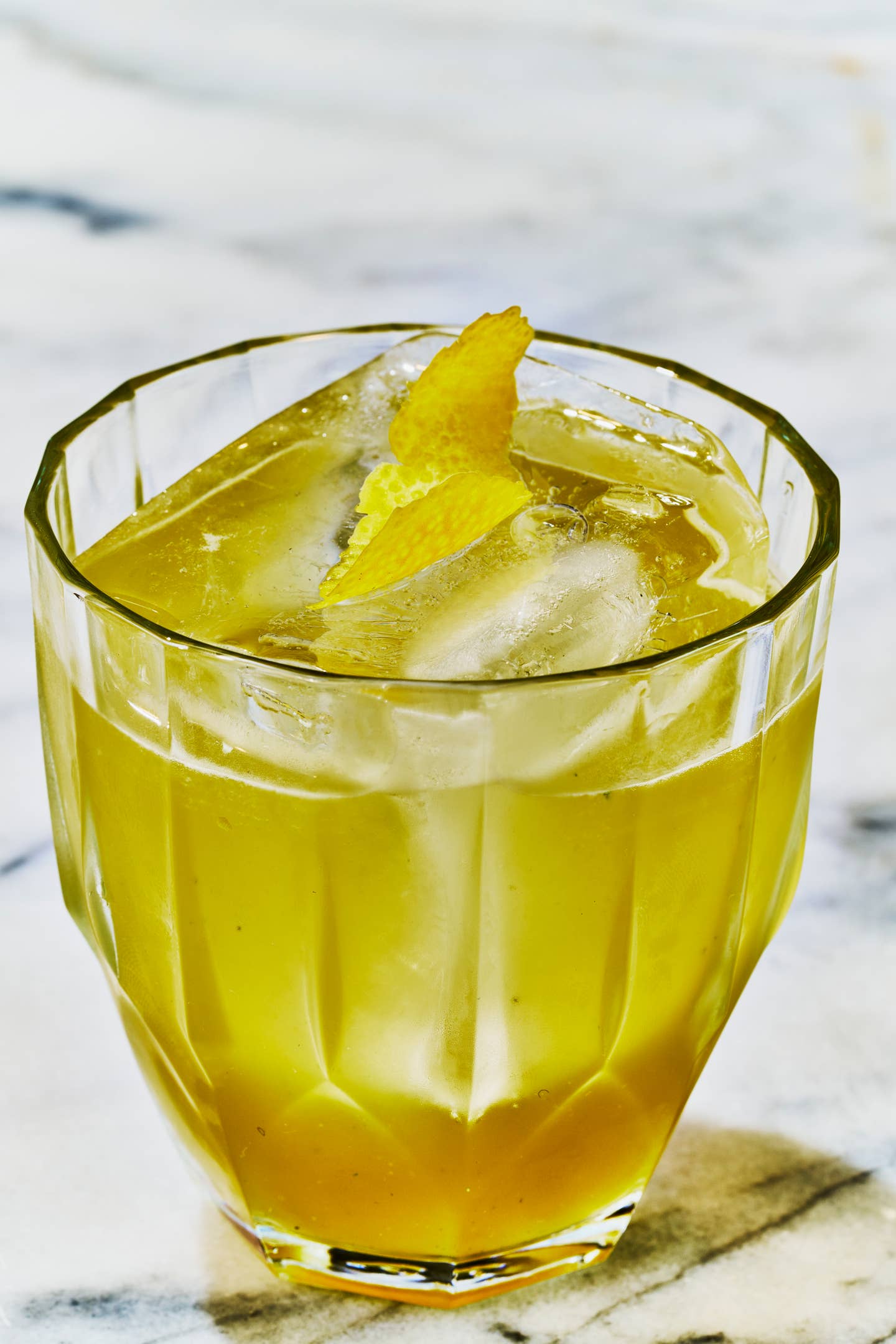
A Glossary of Coffee Terminology
Coffee's journey from a red "cherry" to the dark brew you sip each morning is anything but simple. In researching "9 Great Coffees" for our October issue, we traced coffee's path from origin to cup, often encountering unfamiliar terminology along the way. The various environmental, trade, and taste classifications conferred on coffee can be confounding; we hope that this glossary will help inform your next coffee purchase and enhance your appreciation for your morning cup.
An Overview:
Coffee shrubs, which grow in mountainous regions of Central and South America, Africa, and Asia, bear cherrylike fruit, which contain coffee beans. Once picked, coffee cherries are put through various processes to remove the bean from the fruit. After the beans have been processed, they are called "green" and can be sold to exporters or buyers, who then sell the beans to individual roasting companies.
The coffee shrub is classified as two primary species: arabica and robusta. Arabica is considered superior and produces most of the world's top-quality, or "specialty", coffee; robusta has a stronger flavor and is typically used for making instant coffee and commercial blends.
Bird Friendly:
A certification for coffee grown in accordance with the Smithsonian Institution's Migratory Bird Center's (SMBC) guidelines, which aim to conserve the forest habitats of migratory birds. To qualify, coffee must be shade-grown (see below) and organic, and the plants must create a livable environment for migratory birds. For each pound of coffee sold with the Bird Friendly seal, a 25-cent donation is given to support SMBC research and conservation programs.
Blend:
Made with beans from two or more different places, a blend offers a widely accessible, well-balanced coffee. In the past, blends often served to disguise the imperfections of certain beans; today they reflect the strengths and subtleties of various regions.
Direct trade:
In this commercial model, roasters travel to the coffee's country of origin to buy beans directly from the farmer. Unlike other trade practices, which rely heavily on middlemen, direct trade has growers and buyers as its the main players, so communication between the two parties is essential. As compensation for this extra work, roasters secure better beans and farmers earn more money (up to 25 percent more than with Fair Trade deals; see below). Most of all, direct-trade coffee is distinguished by its high quality; growers employ meticulous techniques in order to produce exceptional beans.
Dry processing:
This method, whose products are also called "unwashed" or "natural", is the oldest existing way to process coffee. The entire cherry remains intact and is placed with thousands of other cherries in thin layers to dry in the sun, so that the fruit may ferment while still on the bean. Eventually, the layers of dried cherry are removed, often by machine, so only the bean remains. Most robusta coffee is processed this way, as is arabica from countries like Brazil, Ethiopia, Kenya, and parts of Indonesia, certain areas of which lack access to enough water to wash the coffee properly. Dry-processed coffee typically exhibits flavors of wine and berries when roasted and brewed but, owing to inconsistencies, can also produce less pleasant flavors, like those of black olive.
Fair Trade:
A certification developed by Fairtrade Labeling Organizations International and licensed in the United States by Transfair USA, it describes a market-based approach that aims to protect farmers in developing countries from the fluctuating prices of coffee by ensuring that coffee is purchased at a base price above the farmer's production cost. Farmers must also prove environmental sustainability by forgoing the use of pesticides and adopting organic methods of farming.
Organic:
Coffee labeled organic must be produced in accordance with U.S. standards for organic production and certified by an agency accredited by the U.S. Department of Agriculture. Grown according to low-impact production methods, organic coffee is raised without synthetic fertilizers, pesticides, or herbicides. Because organic coffee farms tend to have lower yields, their coffee is often higher priced.
Roast:
Green coffee beans must be exposed to heat before being ground and brewed. The level—that is, the length of time the beans are heated—is categorized as the roast. Listed in order from lightest to darkest, the following are the roast levels most commonly encountered in retail coffee.
Cinnamon: A very light roast that has little body and distinct, breadlike flavors.
City: A light roast, distinguished by its milk chocolate color, that reflects coffee's natural flavor characteristics.
Full City: Oils, which form naturally as a result of chemical reactions that take place during the roasting process, begin to show on the surface of brewed Full City-roast coffee.
Vienna: The lightest of the dark roasts but the first in which the roast becomes noticeable in the taste. When brewed, the coffee has a rich brown color and reveals more oil on the surface.
French: The roast, not the coffee bean, is the dominant element in French-roast coffee, which has a deep flavor that is both acidic and smoky.
Italian: Tastes almost exclusively of the roast and is one of the darkest grades available.
Semi-washed processing:
This method, whose products are also called "dry-washed" or "wet-hauled", is a hybrid of the dry and wet processes. The coffee cherry is stripped, but the bean retains some of its mucilage. Afterward, the bean is sun-dried, and eventually the dried mucilage falls off on its own. Semi-washed coffee possesses a strong sweetness and a surprisingly citric acidity, owing to the lack of fermentation during processing. Costa Rica, the world's 11th-largest producer of coffee, consistently uses this method.
Shade grown:
Historically, coffee was shade grown, or grown in the shade of tall trees. Today most coffee-growing plantations have razed their tall trees in an effort to plant more coffee shrubs and achieve higher yields, with devastating environmental results. Shade-grown coffee plantations provide habitats for as many as 200 bird species and dozens of different insects and amphibians. They also allow other plants to flourish, which helps control erosion and maintain soil quality. Beans from shade-grown coffee plantations are thought to have better flavor because the shade delays the growth of the coffee cherry, allowing for a longer growing season and a richer-flavored bean. Shade-grown plantations can produce coffee for up to 50 years, whereas sun-grown plantations survive for only five to ten years.
Single origin:
Single-origin coffee is grown within one region, though multiple plantations from a single region may be combined to create one coffee. Single-origin coffees have distinct flavor profiles based on the varietal, the region of origin, the altitude at which they are grown, and the processing and sorting methods used.
Wet processing:
This practice, whose products are also known as "washed", involves removing the layers of skin and fruit from the coffee bean before it is dried. First the coffee cherry is immersed in water to sort the bad fruit from the good; unripe fruit floats, while ripe fruit sinks. A machine then removes most of the pulp from the beans. Any remaining pulp is separated from the bean by machine or with microbes. Most of the world's coffees are produced by this method, which is said to enhance the coffee's pleasing acidity and brightness.
Keep Reading
Continue to Next Story










